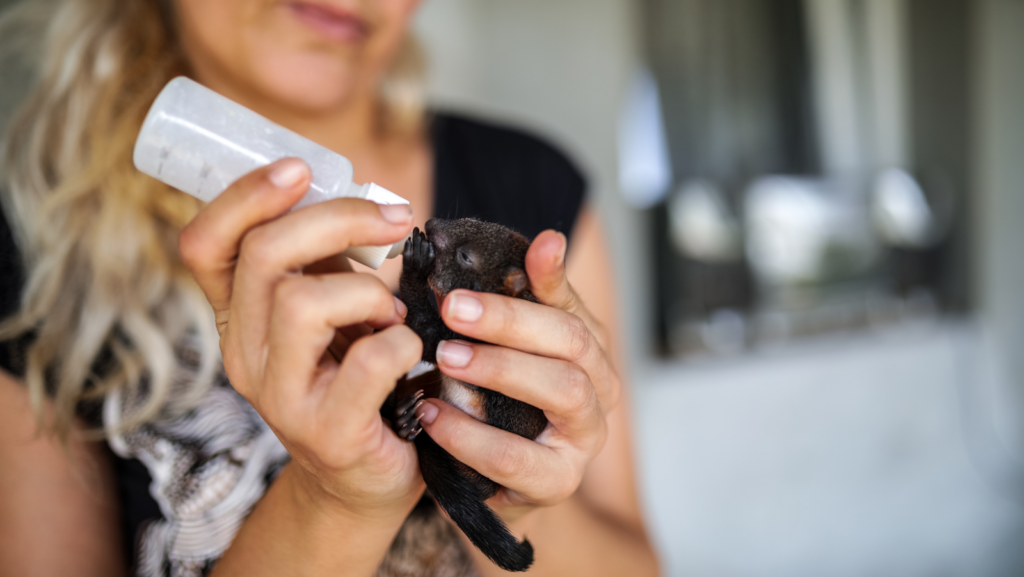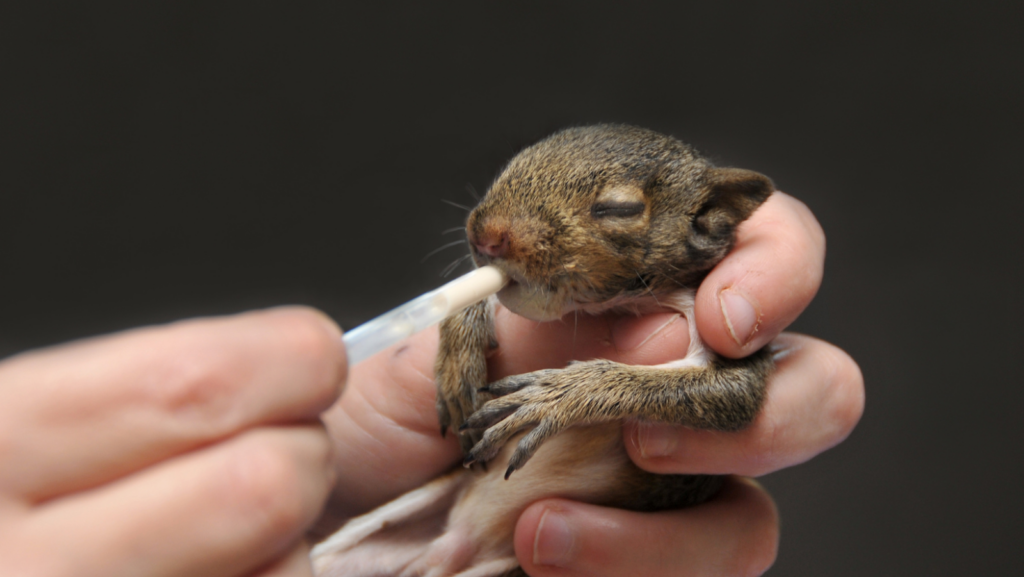Stumbling upon a baby squirrel might seem like a rare, adorable encounter. Yet, the responsibility that follows can be a daunting task. This article will guide you through the essential steps of how to care for a baby squirrel ensuring they grow healthy and strong.
So, ready to embark on this exciting journey of nurturing a baby squirrel? Let’s equip you with the knowledge and confidence you need to succeed in this unique endeavor.
How to Care For a Baby Squirrel

Firstly, associating a baby squirrel’s needs with human responsibility means recognising the difference in their natural and human environment. Understanding this gateways the step to create an environment that fosters the baby squirrel’s growth and offers an appropriate response to its instinctive behaviors.
In essence, one holds a critical duty as they become a baby squirrel’s primary caregiver. This responsibility includes, but not limited to, health monitoring, supplying a balanced diet, and providing a safe living space. Regular check-ups are vital, for example, monitoring for signs of malnutrition, disease, or stress. For a balanced diet, how to care for a baby squirrel generally require a combination of fruits, nuts, and vegetables. Hunting for foods, an integral part of a squirrel’s life in the wild, can’t be entirely replicated so offering a variety of foods to satisfy their natural foraging instincts is suggested.
Feeding Your Baby Squirrel: What and How Often?

Feeding constitutes one of the most vital elements in how to care for a baby squirrel. Understanding the specifics of a baby squirrel’s dietary needs aids in their growth and development. Specialists recommend using a type of formula specifically designed for pet squirrels, like Esbilac Powder Milk Replacer for Puppies. Milk replacers offer a balance of proteins, fats, and essential nutrients vital for a baby squirrel’s growth.
Baby squirrels usually feed every two to three hours for the first week of their lives. The frequency decreases as they grow older, with mature squirrels usually fed three times a day. It’s essential to remember that squirrels are creatures of habit; hence maintaining consistency in feeding routines is highly advised.
Managing overfeeding is also key. Indications, like a bloated stomach, hoarseness, or wheezing, hint at overfeeding. In such cases, reduce the quantities or increase the time between the meals. Conversely, if a baby squirrel appears continuously hungry, increase their food intake.
Hydration forms another integral part of a baby squirrel’s diet. Dehydration, which often presents itself in the form of listlessness and wrinkled skin, can rapidly pose a threat to a baby squirrel’s health. Keeping them hydrated with warm water or an electrolyte solution like Pedialyte is beneficial.
As baby squirrels reach approximately six weeks of age, their diet begins to adapt to include solid foods. Introduction of fresh fruits, vegetables, and nuts comes into play. Foods rich in calcium, like roasted, unsalted almonds or pumpkin seeds, are examples of solid foods to introduce.
Keep in mind, feeding practices for baby squirrels differ greatly from those of adult squirrels. Adult squirrels possess an herbivorous diet characterized by nuts, fruits, vegetables, and grains, while baby squirrels feed mainly on milk replacers until they mature. In all cases, seeking advice from a wildlife rehabilitator or expert proves beneficial to ensure proper nutrition.
Must Know
Caring for a baby squirrel isn’t just about feeding and monitoring health. It’s a journey that requires understanding, patience, and a commitment to the squirrel’s wellbeing. Every step, from using specialized formulas to consulting with wildlife experts, plays a crucial role in their development. The process doesn’t end with rehabilitation. It’s equally important to prepare these little ones for their return to the wild. Simulating wild environments, observing their behaviors, and choosing the right release location are all part of this crucial phase. So remember, whether it’s nurturing a baby squirrel or helping it transition back to the wild, each effort contributes to the preservation of wildlife and enriches the natural world around us.
